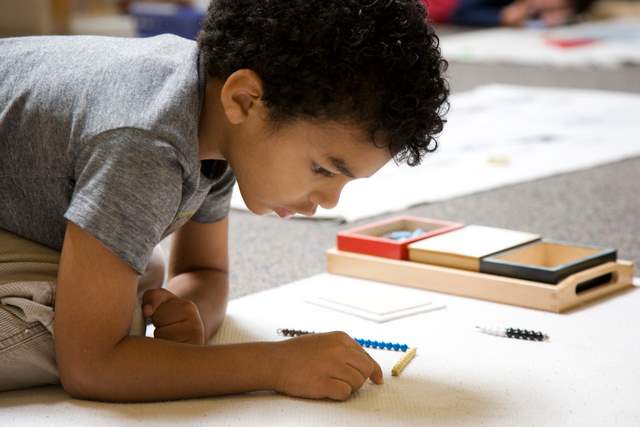
October 30, 2022
A parent of a new student called me to let me know I should “put Roger in a time-out if he is being naughty.” I thanked her for her suggestion and mentioned that in Montessori we don’t believe in using time-outs. She didn’t seem convinced that I could “handle” her energetic son any other way, but after observing Roger in the classroom just a few months later, her perspective changed.
In most American families, time-outs have replaced spanking as the main form of discipline. Unfortunately, this new parenting tactic is as useless as the old approach. It’s also just as violent, judging from the force employed by desperate parents to get their children to stay in the “time-out chair/rug/zone”. (If you’ve ever seen an episode of Supernanny, complete with thrashing children and screaming adults, you know what I mean.)
At first glance, time-outs pit the parent against the child in a battle of patience and will, which is exhausting enough! However, at a deeper level, they also hamper the child’s understanding of what he did wrong, why it was wrong, and how he can be involved in fixing the problem. All he knows, while he sits fuming in a corner, is that next time he’ll be more sneaky so he won’t get caught and stuck in the dreaded time-out chair!
Although children misbehave in the Montessori classroom, we don’t see their behavior as being “naughty” or “bad”. They are simply testing the limits and figuring out what’s right and wrong. Our role is to help them navigate the often rough waters of childhood. After all, the behavioral lessons that stick with children are those that come from experiencing natural consequences. No amount of talking, finger-wagging, and chair-sitting will make a dent in their awareness, as the following story shows…
Let’s go back to the classroom, where three-and-a-half-year-old Roger (yes, the same one) would step on every rug on the floor as he speed-walked across the room. In Montessori, we work with many materials on individual rugs; stepping on a rug is like putting a foot on a table when someone is working on it. It simply isn’t done! Not only do the rugs get dirty, but the child who is working there gets interrupted and the material could get damaged.
I tried explaining to Roger repeatedly that he should not step on rugs, but it just wasn’t sinking in. He would continually plow through other people’s work, interrupting his classmates and driving me batty (all the while oblivious to the impact he was having).
One day, as he was making his way over a rug, I had an epiphany of sorts. What happens when you walk on a rug? It gets dirty. What’s the consequence of getting a rug dirty? You have to brush it. Eureka!
I gathered all the children before lunchtime and told them that the rugs were getting dirty because some friends were stepping on them. I asked them what the solution to our problem could be, and the older students decreed that whoever stepped on a rug should have to stop and brush it (the five-year-olds are extremely proud of their environment and love to keep it clean). I told them that it sounded like a reasonable rule and that I expected everyone to follow it from that point on.
That very afternoon, Roger walked right over a rug and kept on going. I stopped what I was doing, walked across the room, pointed out the infraction, and asked him what he had to do now. He sighed, went to get the rug brush, and cleaned the soiled rug. I observed quietly from a distance without praising or admonishing.
Thirty minutes later, the same scenario repeated itself, and he kept going until I directed him to the brush. The next morning, I again had to stop what I was doing and bring him back to the scene of the crime a couple of times. An hour later, to my utter frustration, he plowed straight through a rug. I was about to get up from my work to pursue him when something incredible happened.
Roger stopped in his tracks. His whole body froze for a second, and then his shoulders heaved and I heard a sigh. He walked over to the brush stand and then went to brush the rug. I could hardly believe what I was seeing, but thirty minutes later it happened again!
That afternoon, Roger dashed across the classroom, and approached a rug at full speed… And stopped. His arms flapped at his side, cartoon-like, and he stood on his tip-toes, trying to restrain his body before he stepped on the rug. His momentum was too great but, instead of stepping on the rug, he launched his leg forward and leaped across the rug with the form and grace of a long-jump athlete. When he landed, he paused for a moment, looked behind him at the rug, and smiled victoriously before speeding away.
I had to smile, too, and I’m still smiling. Roger is now five and completing his second year of Montessori. While still impulsive and very active, he has developed a high level of self-discipline through experiencing more than his fair share of natural consequences. His parents no longer have to use time-outs. And he never stepped on a rug again.
“We must help the child to act for himself, will for himself, think for himself; this is the art of those who aspire to serve the spirit.” – Dr. Maria Montessori, Education for a New World